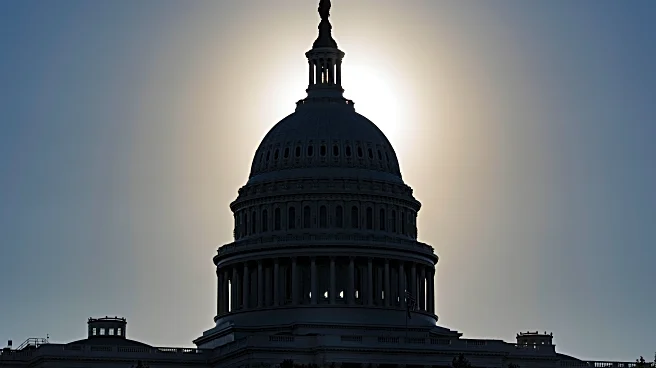What's Happening?
The Environmental Protection Agency (EPA) and the Energy Department are among the federal agencies expected to lay off employees due to the ongoing government shutdown. According to a court document filed by the Office of Management and Budget (OMB) in California federal court, the Energy Department anticipates issuing reduction-in-force notices to 187 employees, while the EPA estimates layoffs for 20-30 workers. The document lists eight agencies with over 4,000 employees potentially affected by these layoffs. OMB Director Russell Vought confirmed that several agencies have already begun the layoff process.
Why It's Important?
The layoffs at the EPA and Energy Department highlight the significant impact of the government shutdown on federal operations and employees. These reductions could affect critical functions related to environmental protection and energy management, potentially delaying projects and regulatory actions. The broader implications include increased uncertainty for federal workers and potential disruptions in services that rely on these agencies. The situation underscores the urgency for resolving the shutdown to prevent further economic and operational consequences.
What's Next?
If the shutdown continues, more federal employees across various agencies may face layoffs, exacerbating the impact on government services and operations. Stakeholders, including political leaders and civil society groups, are likely to increase pressure on the administration to reach a resolution. The ongoing situation may lead to heightened public discourse on the necessity of government funding and the consequences of prolonged shutdowns.
Beyond the Headlines
The layoffs could have long-term effects on employee morale and the ability of agencies to attract and retain skilled workers. Additionally, the reduction in workforce may lead to increased workloads for remaining employees, potentially affecting the quality and efficiency of agency operations. The situation raises ethical concerns about the treatment of federal workers and the prioritization of government functions during budgetary conflicts.












